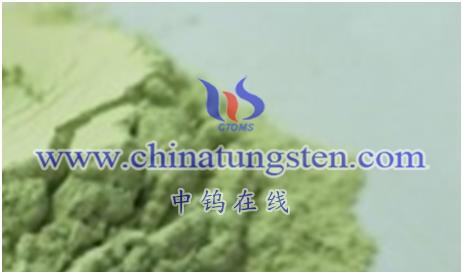The electrocatalytic electrolyte interaction of tungsten oxide (WO₃) refers to the interaction and influence between the electrolyte and the surface of the tungsten oxide electrocatalyst. The electrolyte is an important component in the electrocatalytic process, which contains dissolved ionic and molecular species that can interact with the tungsten oxide surface. This interaction can have an important impact on the catalytic activity, stability, and selectivity of tungsten oxide electrocatalysts. The following are the interaction processes between some electrolytes and tungsten oxide electrocatalysts:
Tungsten Oxide Electrocatalytic Electrolyte Ion Adsorption
Ions in the electrolyte can be adsorbed on the surface of tungsten oxide to form a charge shielding layer or change the surface electronic structure, thereby affecting the catalytic activity. For example, the adsorption of cations may hinder the adsorption of reactants and the reaction progress, while the adsorption of anions may modulate the acid-base properties and charge distribution of the surface.
Tungsten Oxide Electrocatalyst Dissolved Substance Exchange Reaction in Electrolyte
Certain substances in the electrolyte can exchange and react with the tungsten oxide surface, changing the chemical state and reaction energy barrier of the surface. For example, some anions can exchange with oxygen ions on the surface to form surface oxygen vacancies or hydroxyl groups, thereby modulating the catalytic activity.
Redox reaction: In some electrocatalytic reactions, the redox species in the electrolyte can carry out electron transfer and reaction with the tungsten oxide surface. This redox reaction in the electrolyte can participate in the catalytic cycle and the formation of surface oxygen vacancies in tungsten oxide electrocatalysts.
Tungsten Oxide Electrocatalytic Electrolyte Electrolyte Concentration and Acidity
The concentration and acid-base properties in the electrolyte will also affect the tungsten oxide electrocatalyst. Higher ion concentrations can increase the rate of charge transfer, while lower ion concentrations may limit the progress of catalytic reactions. The acid-base properties can change the charge state of the surface and the rate of chemical reactions.
In summary, the interaction between the electrolyte and the tungsten oxide electrocatalyst has a significant impact on the efficiency and selectivity of the electrocatalytic process. Therefore, when designing and optimizing tungsten oxide electrocatalysts, it is necessary to consider the composition, concentration, and acid-base properties of the electrolyte, and to understand its interaction with the catalyst surface.

More details of tungsten oxide product, please visit website: tungsten-oxide.com
Please contact CHINATUNGSTEN for inquiry and order of tungsten oxide:
Email: sales@chinatungsten.com
Tel.: 86 592 5129595






